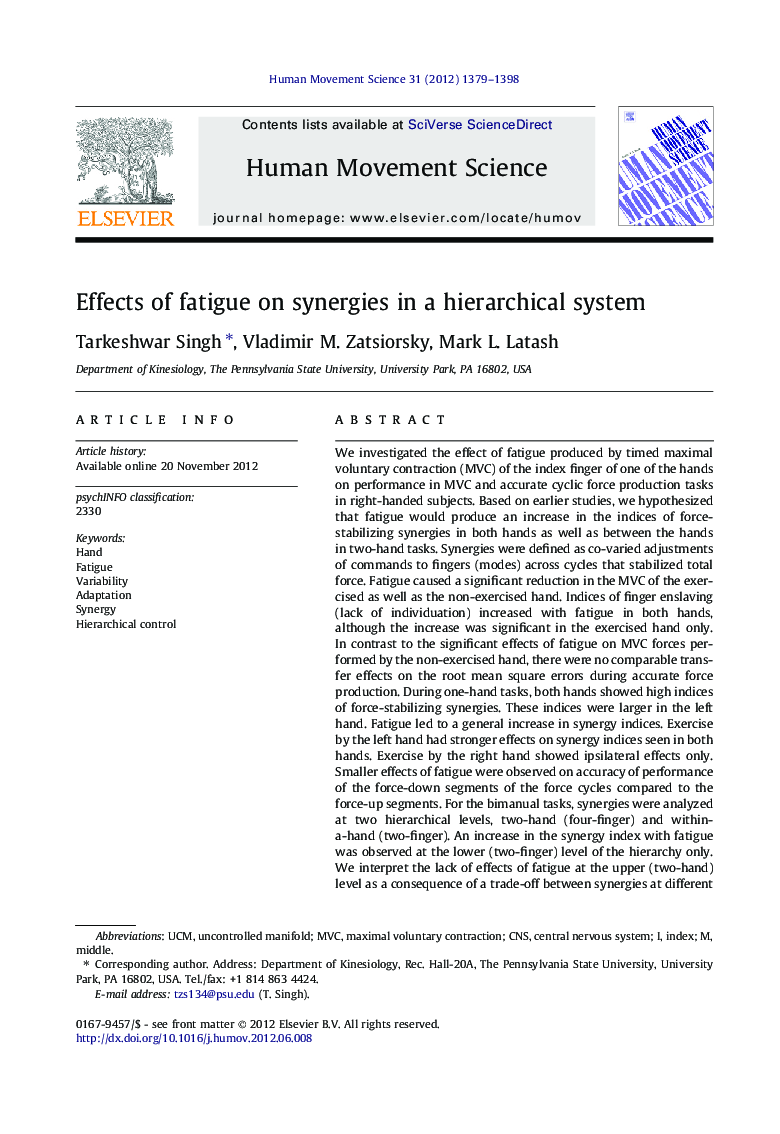| Article ID | Journal | Published Year | Pages | File Type |
|---|---|---|---|---|
| 928504 | Human Movement Science | 2012 | 20 Pages |
We investigated the effect of fatigue produced by timed maximal voluntary contraction (MVC) of the index finger of one of the hands on performance in MVC and accurate cyclic force production tasks in right-handed subjects. Based on earlier studies, we hypothesized that fatigue would produce an increase in the indices of force-stabilizing synergies in both hands as well as between the hands in two-hand tasks. Synergies were defined as co-varied adjustments of commands to fingers (modes) across cycles that stabilized total force. Fatigue caused a significant reduction in the MVC of the exercised as well as the non-exercised hand. Indices of finger enslaving (lack of individuation) increased with fatigue in both hands, although the increase was significant in the exercised hand only. In contrast to the significant effects of fatigue on MVC forces performed by the non-exercised hand, there were no comparable transfer effects on the root mean square errors during accurate force production. During one-hand tasks, both hands showed high indices of force-stabilizing synergies. These indices were larger in the left hand. Fatigue led to a general increase in synergy indices. Exercise by the left hand had stronger effects on synergy indices seen in both hands. Exercise by the right hand showed ipsilateral effects only. Smaller effects of fatigue were observed on accuracy of performance of the force-down segments of the force cycles compared to the force-up segments. For the bimanual tasks, synergies were analyzed at two hierarchical levels, two-hand (four-finger) and within-a-hand (two-finger). An increase in the synergy index with fatigue was observed at the lower (two-finger) level of the hierarchy only. We interpret the lack of effects of fatigue at the upper (two-hand) level as a consequence of a trade-off between synergies at different levels of the hierarchy. The differences between the hands are discussed within the dynamic dominance hypothesis.
► Indices of finger enslaving increased with fatigue in both hands. ► There were significant effects of fatigue on MVC forces performed by the non-exercised hand. ► During one-hand tasks, both hands showed high indices of force-stabilizing synergies. ► These indices were larger in the left hand. ► Exercise by the left hand had stronger effects on synergy indices seen in both hands.
